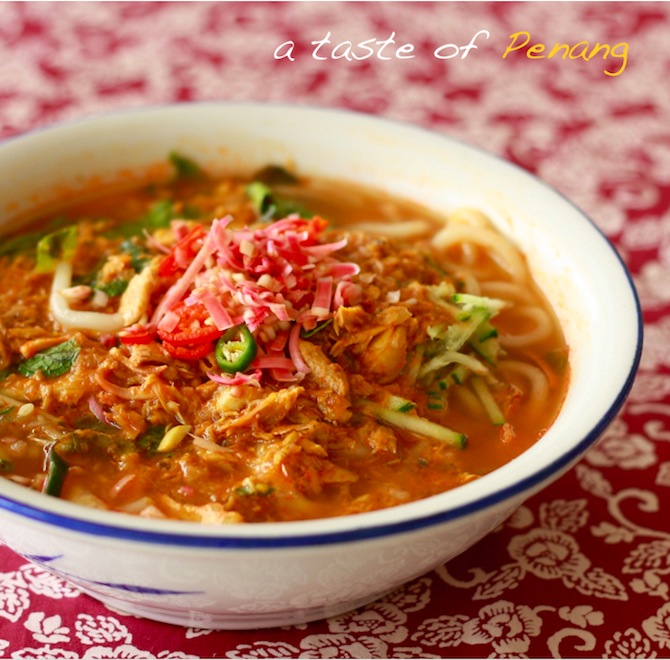Penang is well known for its food ‘cult’-ure.
Tell a Penangite her favorite Cendol could be better and she’ll never speak to you again. Try to shut down a Penangite’s most-loved Hokkien Mee stall because it’s been operating illegally on the side of the road for 30 years, and he’ll tie himself to the hawker’s cart and go on a hunger strike. Double the price of a Penangite’s favorite Char Koay Teow and make him wait for an hour, and he’ll still smile for fear he might offend the cook.
If street food is your obsession, this little island is heaven.
Through its early development as a multicultural society, and more importantly, the resulting cross-cultural interactions, Penang not only became a place to experience a multitude of cuisines, but also a place to taste the fusions of these flavors. This is one of the many reasons Penang is home to the cultural UNESCO World Heritage site of George Town.
Penang has numerous iconic dishes, but only one truly represents its variety of cultures and deep layers of history and traditions.
Long before CNN declared it is as the #7 World’s Most Delicious Food, asam laksa (or assam laksa 亚三叻沙) has been drawing tourists to Penang just for a taste. But for a local like me, asam laksa is a reminder of home. A spicy, flowery, minty, sweet, sour, fishy noodle soup that has no comparison. A dish that us Penangites should appreciate for its relation to our culture and history, but something we tend to forget as we slurp up the last noodle, and scoop out the last drops of the thick soup.


Smooth round rice noodles immersed in a broth of a seemingly chaotic mix of spices and flavors, thickened with mackerel fish and sour tamarind peel, and topped with heaps of fresh vegetables and herbs for added texture and color. Finally, a squeeze of zesty calamansi lime and a spoonful of sweetened shrimp paste (heh ko sauce).
Everything is included. Every one of the basic five tastes – sweet, sour, bitter, salty, and umami (savoriness).
And the effect of combining so many flavors?
Harmony.
Who invented such a complex dish? How did someone think of stringing such a kaleidoscope of ingredients together to create asam laksa?
Many people provide a simple conclusion that the dish is of Peranakan Nyonya origin – a cross-cultural mix of Malay and Chinese. While that may be partly true, the explanation omits an important element of asam laksa. That the dish was never created by one person, or one generation, but it evolved over layers of history.
Variations of asam laksa can be found throughout northern Malaysia (e.g. Kedah Laksa), and on the east coast of Malaysia (e.g. Terrenganu Laksa). Therefore, it is clear that the humble beginnings of the dish came from the Malay coastal communities.
Imagine a Malay family in a fishing community centuries ago. After claiming the prize fish from the nets, they would be left with a random pile of small, bony fish. To avoid waste, they would toss the scrap fish into a noodle soup, add in tamarind peel to mask the oily taste, and finally whatever other bits of spices, fruits, and veggies around. Asam laksa ingredients were unique to each fishing family or community. As generations passed, specific flavors became associated with the soup, and it gained popularity outside of fishing villages. Later, Chinese arrived in larger numbers to the west coast of the Malay Peninsula, married Malay women, and a new culture developed called Peranakan Baba-Nyonya. Asam laksa found its way into Nyonya kitchens, where other flavors were added - possibly the essential spice of bunga kantan (torch ginger flower) - which led to the version of what we now call Penang Asam Laksa.
Traditionally served in the late afternoon (too sour and pungent to eat in the morning or at night), my grandma would always cook up asam laksa for me before dinner at her village house in Butterworth. My mom continued the tradition, cooking in her kitchen in a pre-war shophouse along Siam Road in George Town. She never allowed me inside, but put me to work at the dinner table picking the mint leaves off the stalks.
After shopping trips in George Town, my mom would treat my sister and I at Kek Seng Coffee Shop along Penang Road, by starting with dessert of Ais Kacang with durian ice cream, and then to balance the sweetness with a bowl of sour asam laksa. A tradition that Mark and I continue today.
But nothing beats homemade asam laksa. Even with an hour spent at Chowrasta wet market sourcing all the ingredients and a few hours in the kitchen – cleaning fish, sitting on the floor pounding spices, cutting vegetables, and cooking over a steaming wok – the taste alone is worth the effort. Carrying on the tradition my grandma and mom passed to me is just the icing on the…no, wait, that saying doesn’t work here…how about, just the “extra mint leaf on top of a bowl of asam laksa".
Continue on to my family recipe of asam laksa...




